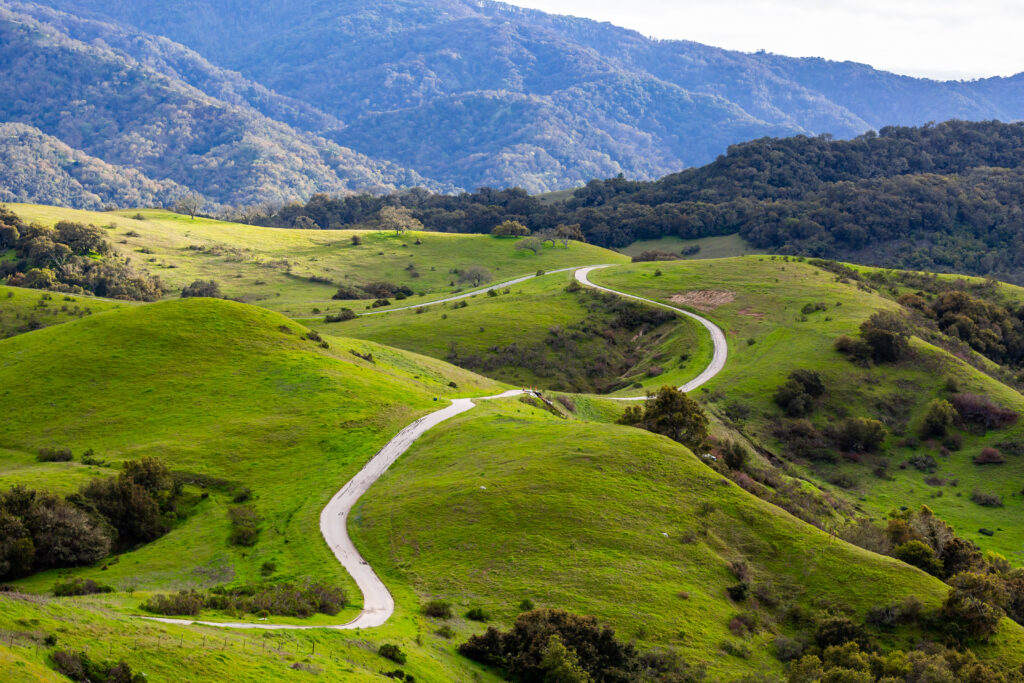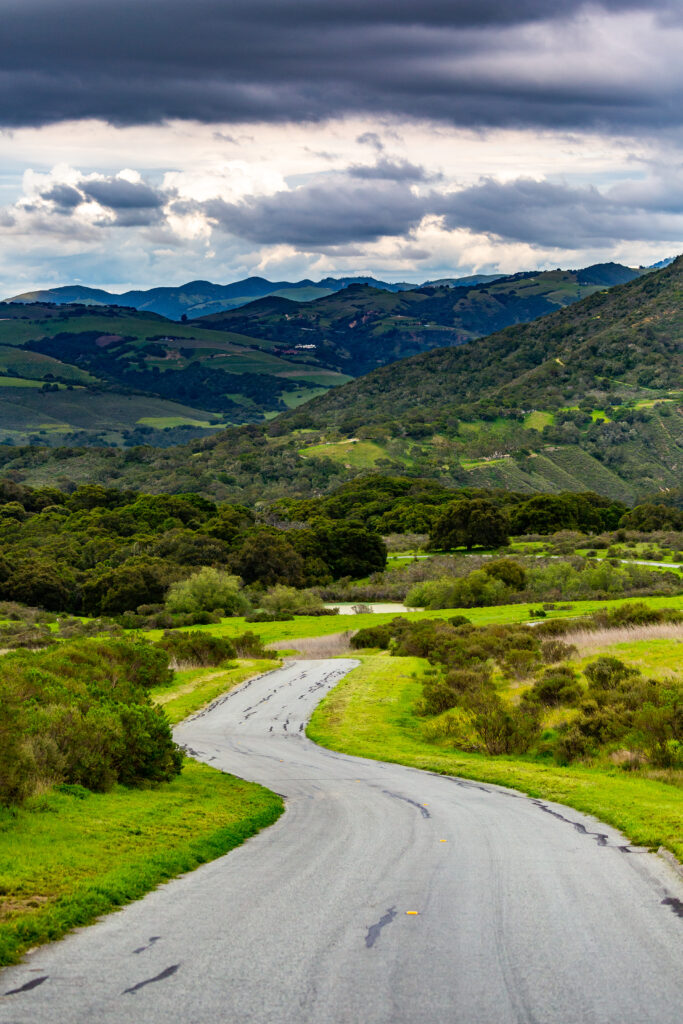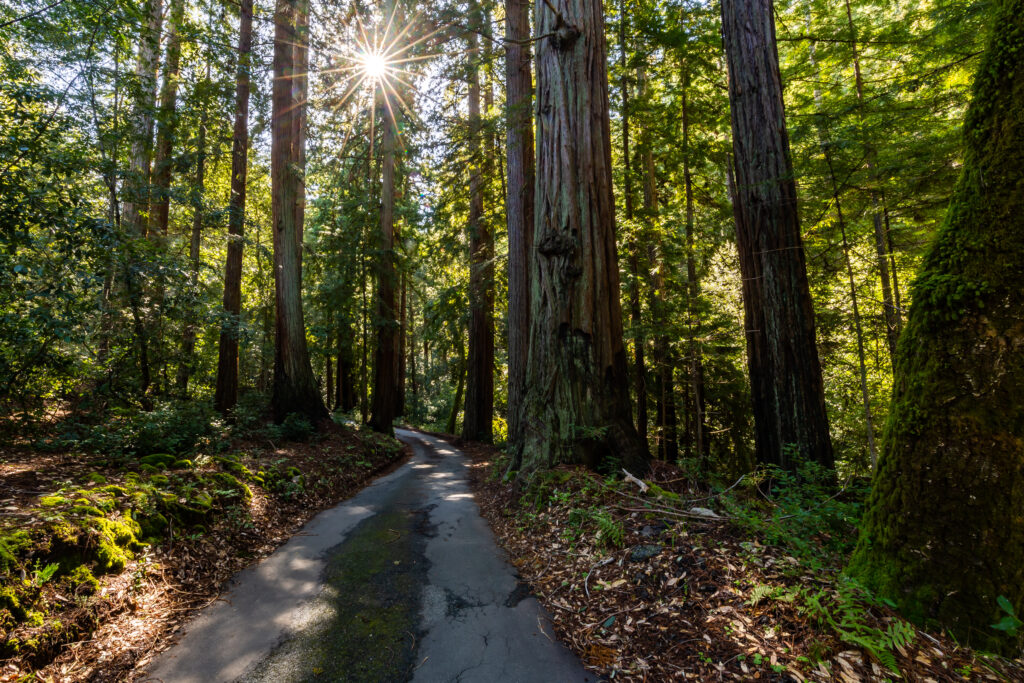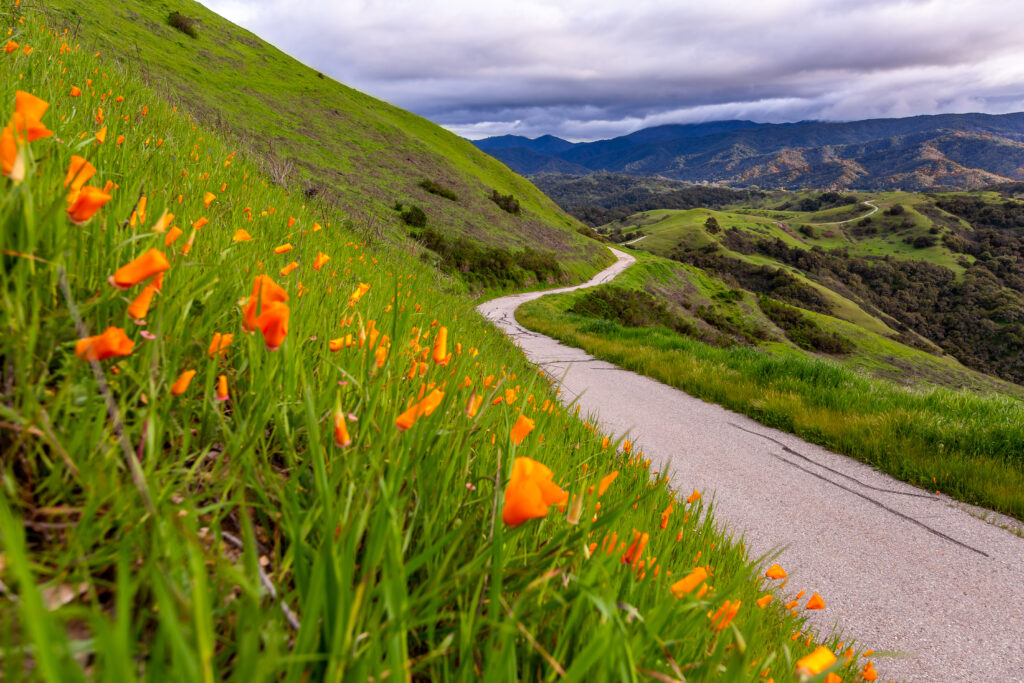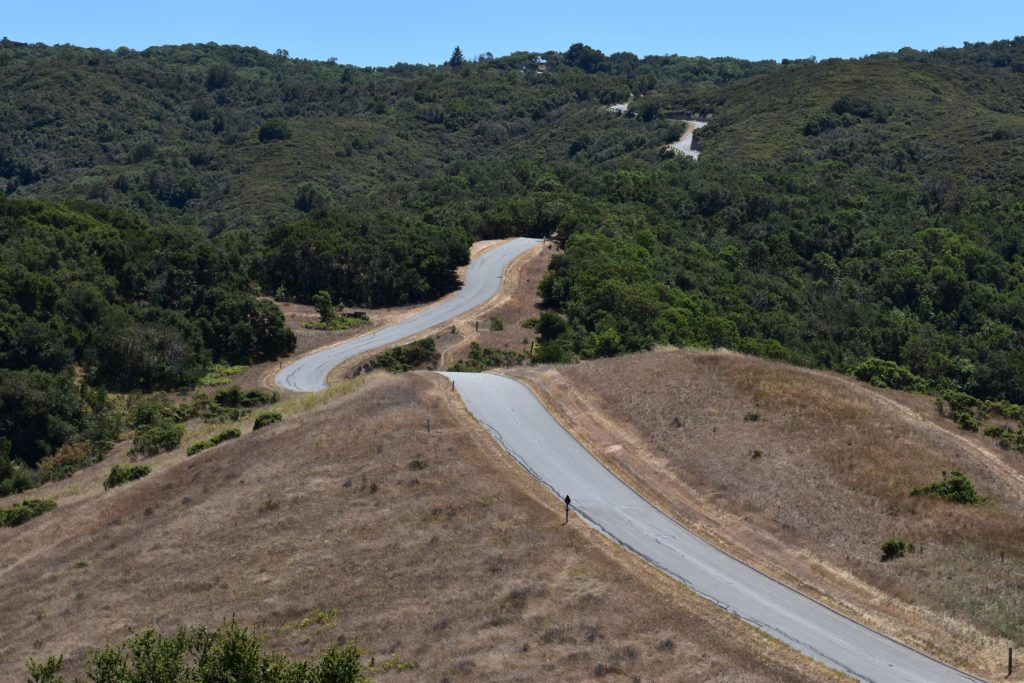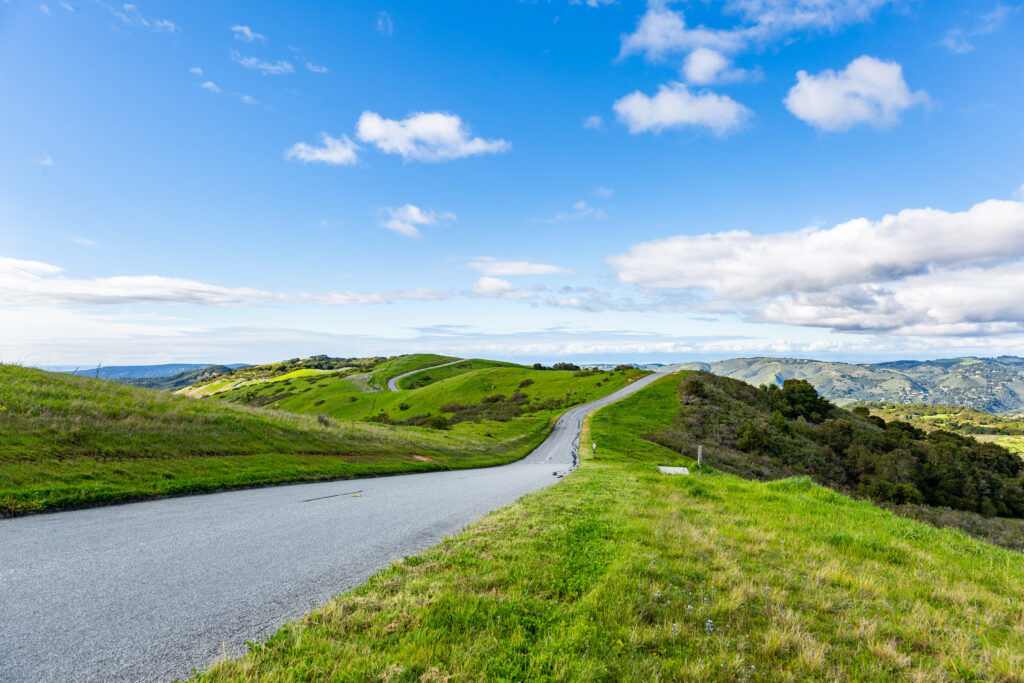Driving on The Preserve is part of the experience of conservation living, whether you get behind the wheel for the joy of the drive or simply to travel from one place to the next. This paved element of the landscape was quite literally designed from the ground up with roads that enhance the cadence of the community and encourage a leisurely pace of life. Neither a racetrack nor the open highway, our roads were painstakingly planned to maintain the natural rhythms of our wildlife communities, enhance the experience of entering The Preserve, and still protect the views and sensitive habitat.
Like most parts of the community, the roads on The Preserve begin with a story. In its previous life as a working ranch, The Preserve was crisscrossed by miles of unpaved ranch roads primarily used to move cattle between pastures for grazing. These ranchers were smart and in striving for efficiency, found the best ways to move across the landscape and rarely carved roads longer or wider than necessary. Little did they know, however, these roads would later become part of the framework for The Preserve Design. As the original partnership laid its plans for development, some of these roads were retired, while others were repurposed and converted into the trails, driveways and roads of today’s community.
As The Preserve vision came to fruition, roads were thoughtfully designed to minimize accentuate viewsheds and avoid the most sensitive habitats. During road construction, engineers and contractors studied the natural topography of the land to develop a unique driving experience with intentional sweeping turns and meandering paths, while paying homage to the ranchers’ wisdom decades prior. The result is a network of roads safe for speeds up to 30 miles per hour with remarkable net conservation benefits, including minimal erosion, limited infrastructure, protected night sky, and a landscape that wildlife can traverse with ease.
Despite the thoughtful design of the roads, it is still important to keep wildlife in mind as you enjoy your drive around The Preserve. Deer and turkeys are two of the most common species regularly on our roads, typically in search of food or a place to rest. Bobcats and juvenile skunks, or kits, are also common, especially during their dispersal seasons when young mammals venture away from their mothers and have yet to learn the dangers of living on their own. Acorn woodpeckers are frequently found foraging insects in the middle of the road and may unwittingly fly into vehicles. Likewise, ectotherms like lizards and snakes are also drawn to the roads in search of warmth, as they regulate their body temperature to match changes in their environment. Please slow down for our wild neighbors and you might be treated to some excellent wildlife viewing!
On your next drive through The Preserve, imagine a dirt road and a car from the 50’s slowly passing the ranchers and their cattle from days gone by. Check your speed, enjoy the views, and revel in the rural mystique of the land that is unique to The Preserve. We all take great pride in this community and honor our collective responsibility to protect it for generations to come.
By: Alex Wood
